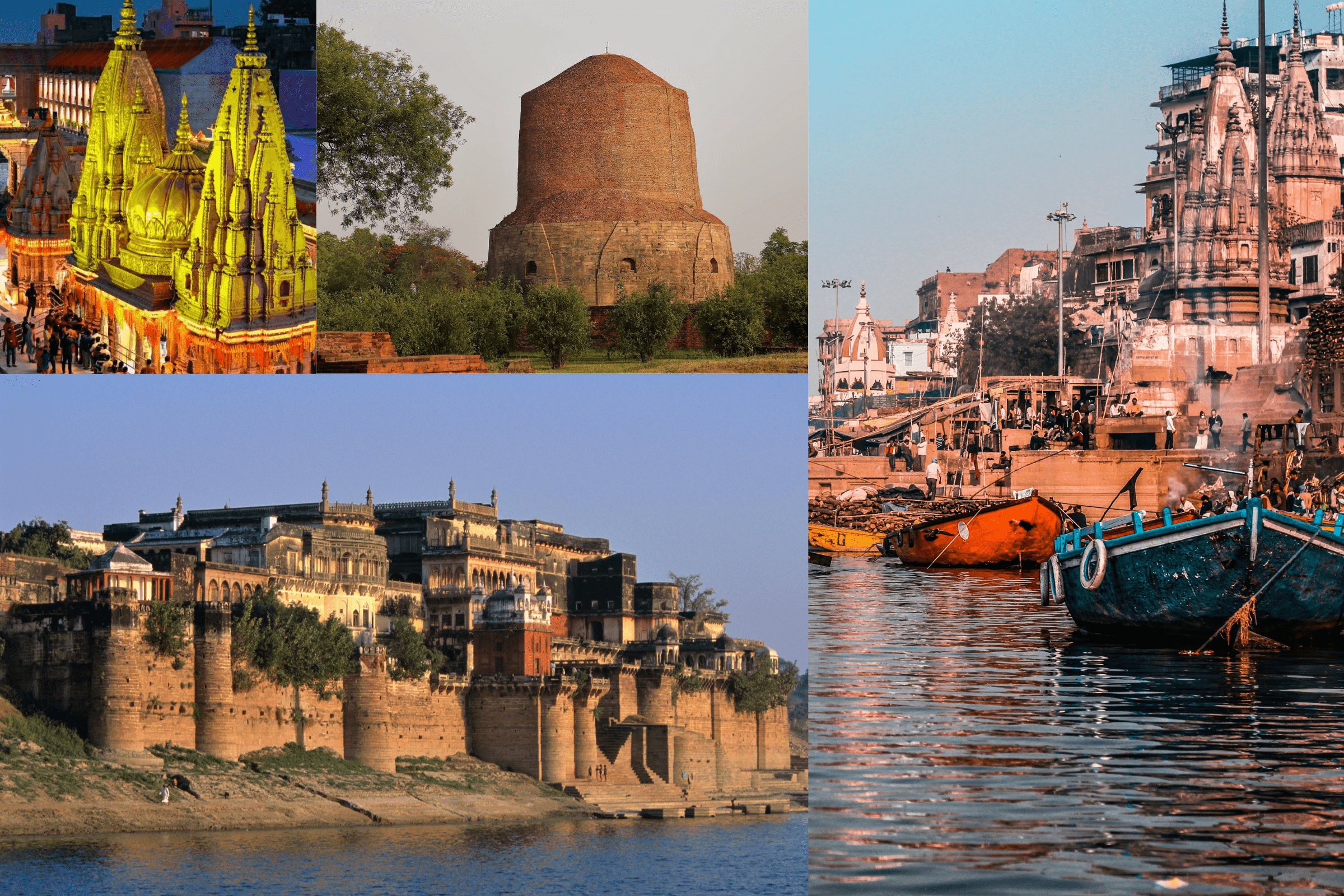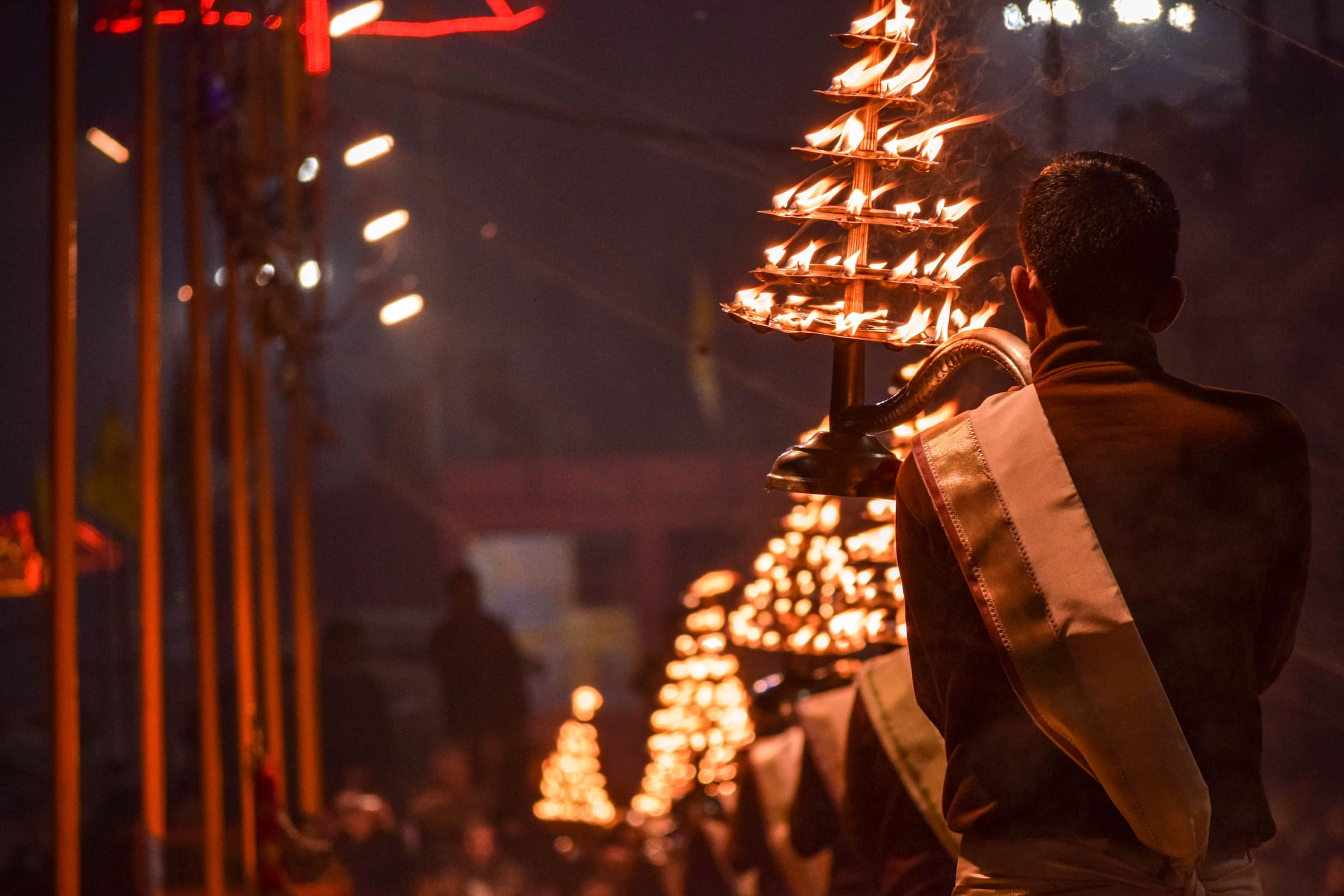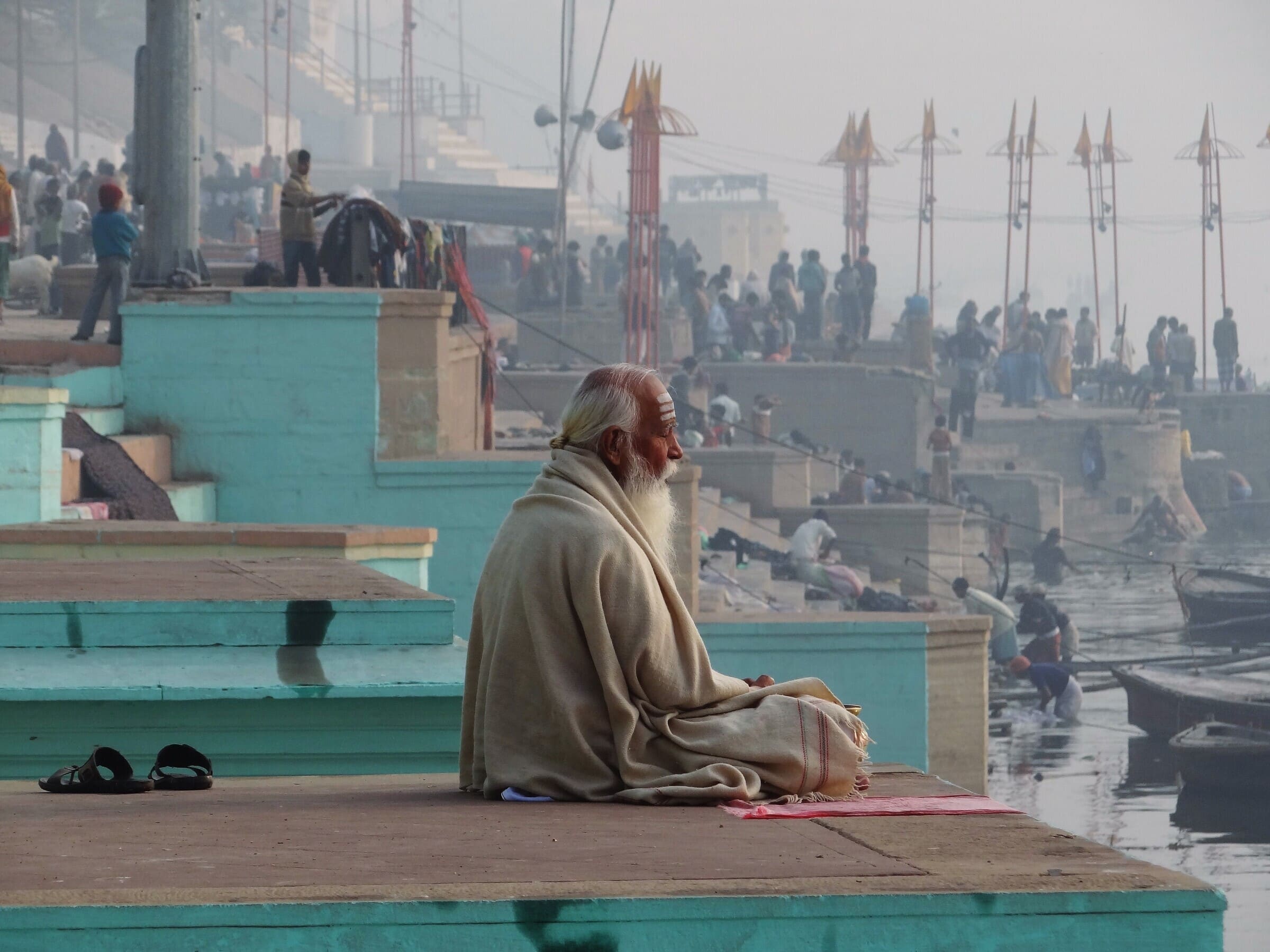
Kashi Vishwanath Temple

Kashi Vishwanath Temple
Kashi Vishwanath Temple, located on the western bank of the sacred river Ganga in Varanasi, comprises one of the 12 Jyotirlingas, or temples devoted to Lord Shiva. Lord Shiva, also known as Vishwanatha or Vishweshwarar, the king of the cosmos, is the principal deity of the Kashi Vishwanath Temple.
India's cultural centre, Varanasi, is hence renowned as the city of Lord Shiva. The temple's tower boasts an enormous 800 kilograms of gold plating, making it a heavenly sight.
The temple had multiple previous iterations. The current edifice, known as the Golden Temple because of the gold plating on its spires and domes, is said to have been established in the 18th century by Ahalya Bai of the Holkar dynasty.
Finely carved decoration adorns the columns, beams, and walls. There are numerous smaller lingams (stylized phallic symbols representing the god Shiva) clustered around the main object of worship — the smooth black stone lingam that stands 2 feet (0.6 m) high, 3 feet (0.9 m) in circumference, and sits proudly on a silver pedestal — within the temple compound, which is hidden behind a wall and accessible only to Hindus. In the courtyard are several smaller shrines with additional lingams and goddess statues. To the north, an open colonnade houses the Jnana Vapi, or Wisdom Well, whose water is often considered a liquid manifestation of enlightenment.
Varanasi tourist places like the Kashi Vishwanath Temple and the Ganges River hold immense spiritual significance for Hindus seeking moksha, and hence devotees from across the world seek to visit Kashi at least once in their lifetime.
Ganga Aarti at Dashashwamedh Ghat
One of the oldest cities globally, Varanasi is considered to have been built into existence by Lord Shiva & continues to be one of the holiest places in India.
Spirituality flows in the waters of the river Ganga. To honour and worship the deity every evening, the Ghats light up in a million stars with the spectacle of the Ganga Aarti.
It includes burning oil lamps, chants, and a captivating image of hundreds of people paying their respects. Earthen lamps or diyas are lit and floated into the river on a small leaf with flowers.
From the hypnotic clang of the cymbals to the mesmerizing glow of the flickering flames of the diyas and the soul-stirring echoes of the chants by the devotees, the Ganga Aarti at Dashashwamedh Ghat is a symphony of the senses that will leave an indelible mark on your soul.

Ganga Aarti at Dashashwamedh Ghat
Ramnagar Fort: A Hidden Gem Amongst Varanasi Tourist Places

Ramnagar Fort: A Hidden Gem Amongst Varanasi Tourist Places
Ramnagar Fort, built in the 18th century by Maharaja Balwant Singh, is one of Varanasi's most scenic attractions. Situated just 14 km from the Varanasi Junction railway station, the fort overlooks the banks of the Ganges River.
Anant Narayan Singh, known as the Maharaja of Varanasi, currently resides in this quaint fort made of red sandstone. The fort houses two stunning temples and a museum inside its premises. While one temple is devoted to Lord Vishnu, the other one honours Ved Vyasa, who penned the epic Mahabharata. The Mahabharata, written approximately 5,000 years ago, is one of the longest poems in the world. Ved Vyasa is said to have stayed in this land for some time. The temples contain remarkable statues of Lord Vishnu and Ved Vyasa.
The Ramnagar Fort is a sight to behold, especially during the Ram Lila celebration, when it is alive with activity. Ram Lila celebrations make the fort look vivid and colourful as numerous events of the Ramayana are staged, keeping tourists entertained. With the large scale on which the Dussehra celebration is held, the fort is rather crowded during the grand prix of this ten-day event. Monsoon rains saturate the fort, enhancing its beauty and sophistication.
Historical architecture and elegance make Ramnagar Fort a sight to behold. Make sure to add Ramnagar Fort to your list of Varanasi tourist places for a complete Kashi experience!
Banaras Ghats
The city of Varanasi has around 84 ghats that stretch from Assi Ghat to Raj Ghat. These quintessential Banaras attractions are cemented steps built for pilgrims, making it easier for them to take dips in the Ganga.
The ghats of Varanasi are believed to have been around since the 14th century, but most were remodelled during the 18th century under the Maratha rulers.
Some of the ghats are privately owned, while others hold special significance in Hindu mythology. They are mainly used for bathing and religious rituals.
The Varanasi ghats offer a unique experience that one can't afford to miss. The moment you step onto the ghats, you are welcomed with a vibrant atmosphere, the sound of chants and prayers, and the smell of incense sticks. There are sadhus immersed in meditation, & colourful boats dot the river. The stroll is akin to a journey through time, walking along and witnessing centuries-old heritage & customs.
The hustle and bustle of the crowd mixed with the serene view of the Ganges River creates an otherworldly experience that stays with you long after you've left. Varanasi tourist places aren't complete without a visit to the iconic Banaras Ghats, where the ancient traditions of India come alive.

Banaras Ghats
Dhamek Stupa

Dhamek Stupa
Varanasi oozes with energy from all religions, not just one. It is the cultural hub of people from different parts of the world & with different beliefs who come here in search of peace.
Visiting Dhamek Stupa is essential when in Sarnath due to its tremendous antiquity and significance, for it was here that the Buddha gave his first sermon and revealed the eightfold path to nirvana.
The cylindrical stupa is a remarkable 43 m high and 28 m in diameter, and some of its arched niches might have once contained statues of the Buddha. The exquisite carvings and details on the stupa give it the feel of a living, breathing piece of history. It is believed to have been built in the 6th century BC & expanded under Emperor Ashoka's reign in the 3rd century BC.
After entering, you will find a small museum with further information about the monument; it falls under the authority of the Archaeological Survey of India (ASI) and is kept nicely, with gardens, benches, and trees providing shade on hot afternoons.
As you walk around it, a sense of calm & reverence wash over you. The monument is a fascinating place for those seeking spirituality & a glimpse into ancient Indian architecture.
